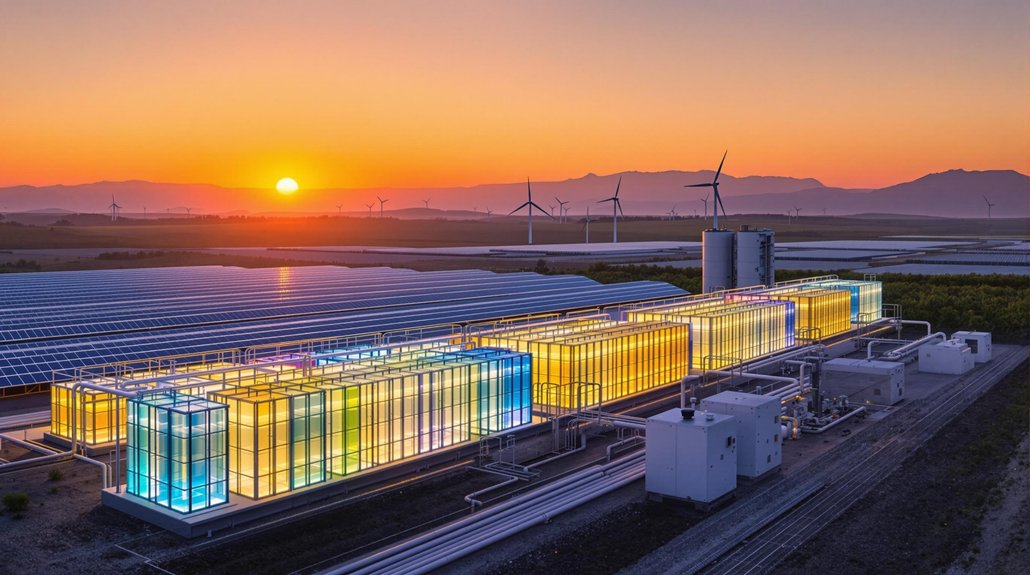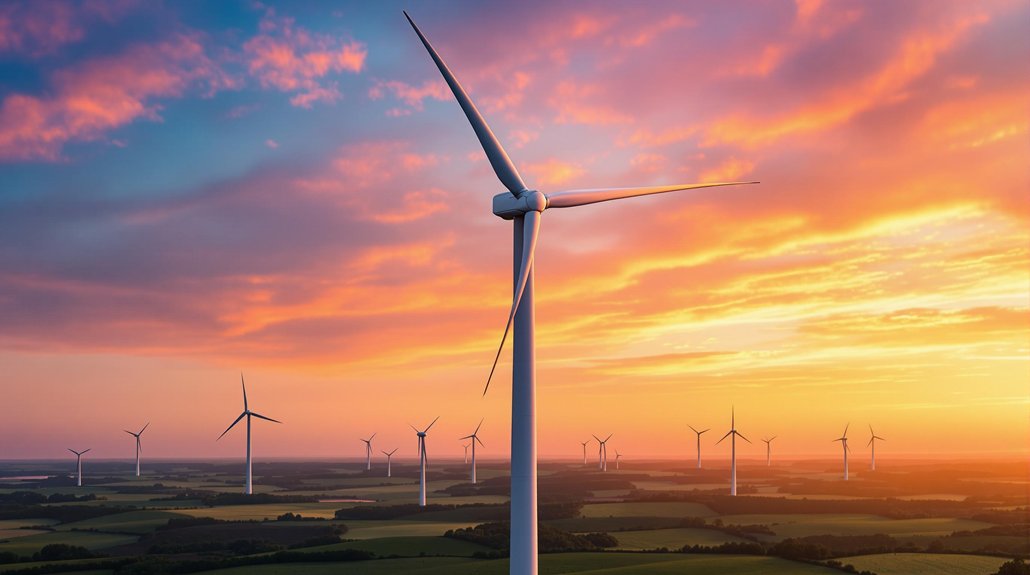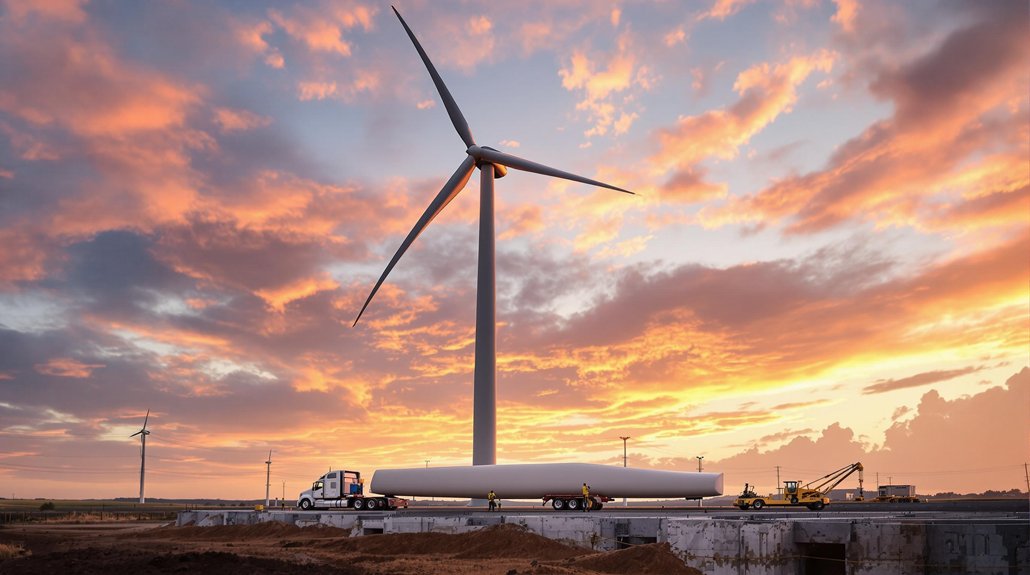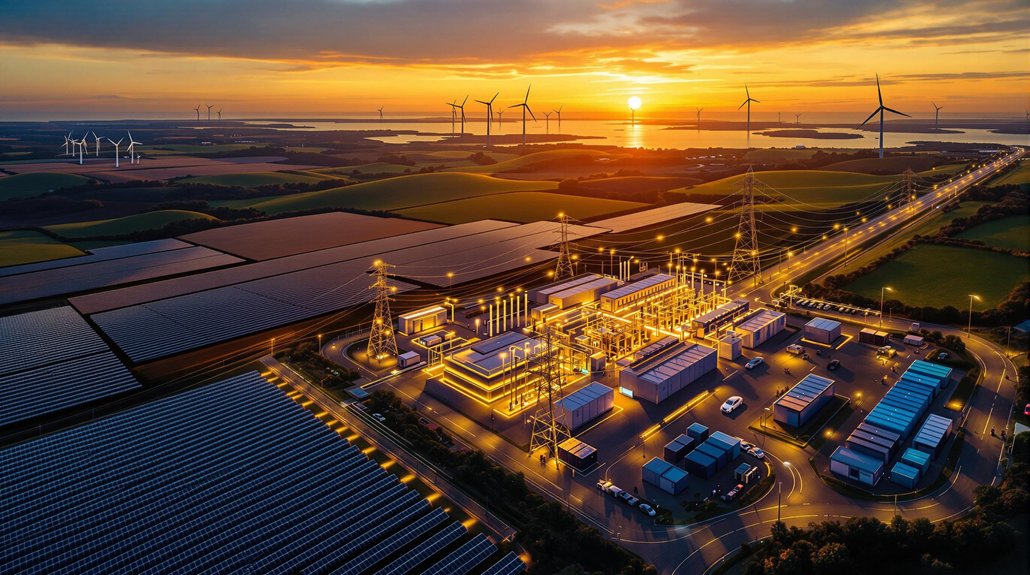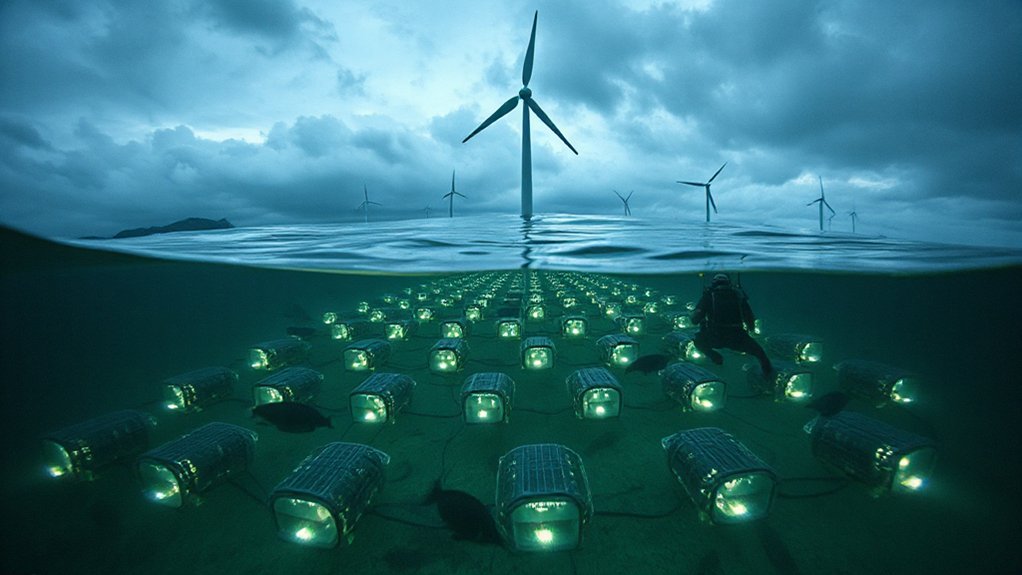Flow batteries are emerging as sustainable energy storage solutions for renewable power. They use liquid electrolytes in separate tanks, allowing power and energy to scale independently. These systems offer impressive advantages: 10,000+ cycle lifespan, millisecond response times, and non-flammable components. Despite lower energy density than lithium-ion batteries, flow batteries excel in grid applications and can reduce storage costs by 20-50%. The growing global market highlights their potential for transforming energy infrastructure.
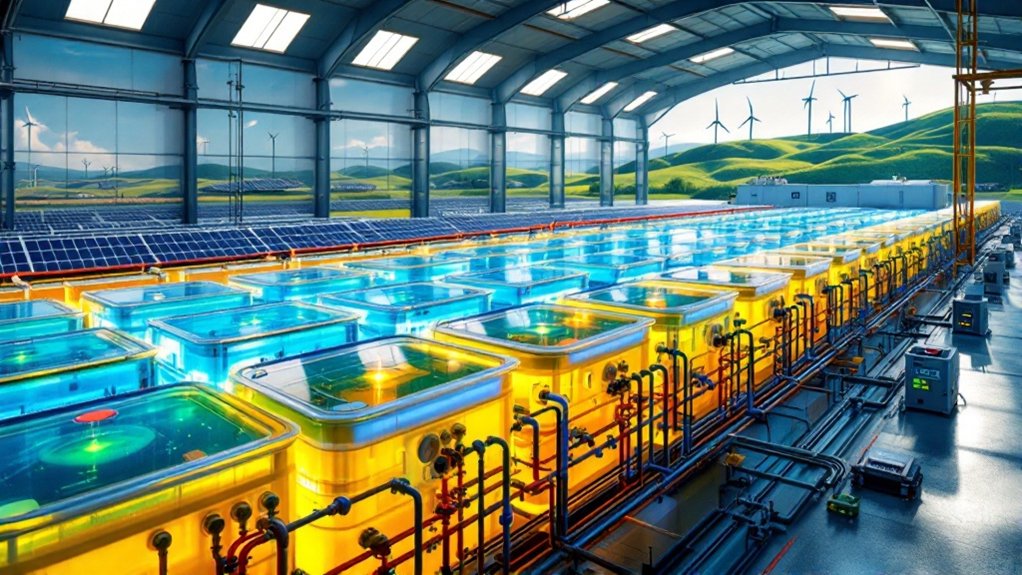
As the world searches for better ways to store renewable energy, flow batteries are emerging as a promising solution for large-scale energy storage needs. These rechargeable systems use liquid electrolytes stored in separate tanks, which are pumped through an electrochemical stack to store and release electricity. Unlike traditional batteries, flow batteries can scale power and energy capacity independently, making them highly adaptable.
The design of flow batteries offers several advantages for grid storage. They boast an impressive cycle life exceeding 10,000 cycles with minimal degradation. They can respond in milliseconds to stabilize the grid during demand fluctuations. Their non-flammable aqueous electrolytes make them safer than many alternatives, and they operate at ambient temperatures, allowing flexible placement. Vanadium-based flow batteries can last approximately 30 years without significant material degradation.
Flow batteries play a key role in supporting renewable energy integration. They help reduce dependence on fossil fuel peaker plants that fire up during high demand. The materials in flow batteries are largely recyclable, creating a smaller environmental footprint than lithium-ion batteries. Many use abundant, low-cost materials like iron. Flow batteries can reduce energy storage costs by 20% to 50% compared to traditional battery technologies in microgrid applications. Like other Battery Energy Storage Systems, flow batteries contribute significantly to optimizing energy supply and demand patterns in modern electrical grids.
Despite their benefits, flow batteries face challenges. They have lower energy density than lithium-ion batteries (15-70 Wh/L compared to 200-400 Wh/L), meaning they require more space for the same energy storage. They also have higher upfront costs due to complex system designs and experience some efficiency losses from pumping energy requirements.
The global flow battery market reached $290.5 million in 2021 and is growing at nearly 20% annually. The Asia-Pacific region leads in adoption and manufacturing, with utility-scale applications representing over 60% of the market. Notable installations include a massive 200 MW/800 MWh system in Dalian, China, and multiple MW-scale projects across North America, Europe, and Australia.
Research continues on improved membranes, new electrolyte chemistries using earth-abundant elements, and AI integration for optimized operation. Some efforts focus on miniaturization for smaller commercial applications, while others explore hybrid systems combining flow batteries with other storage technologies.
Frequently Asked Questions
What Is the Expected Lifespan of a Typical Flow Battery?
Flow batteries typically last between 15-20 years, with some models claiming 20-30 year lifespans.
They’re more durable than lithium-ion batteries, which usually last 7-10 years.
Flow batteries can handle 10,000-20,000 charge-discharge cycles, and some vanadium models exceed 200,000 cycles.
They lose less than 1% capacity annually.
Their longevity comes from replaceable components and the ability to reuse electrolytes indefinitely.
How Do Flow Batteries Compare in Cost to Lithium-Ion Batteries?
Flow batteries cost more upfront than lithium-ion batteries, with initial prices around $551/kWh compared to $350/kWh for grid-scale lithium-ion systems.
However, they’re cheaper long-term due to their 25-year lifespan versus 5-10 years for lithium-ion.
Flow batteries have 40% lower lifetime ownership costs and cost about $0.15 per usable kWh per cycle, making them more economical for long-duration energy storage despite higher initial investment.
Are Flow Battery Electrolytes Recyclable or Biodegradable?
Flow battery electrolytes are highly recyclable.
Vanadium electrolytes can be recovered at a 97% rate and reused for another 20+ years.
Iron-based electrolytes are also recyclable and made from abundant materials.
Some newer organic electrolytes are biodegradable or derived from renewable sources.
Recycling these materials reduces mining needs, lowers carbon footprints, and minimizes waste.
The industry’s developing recycling infrastructure supports a circular economy approach.
Can Flow Batteries Be Miniaturized for Residential Applications?
Flow batteries can indeed be miniaturized for homes. PNNL has developed a card-sized test cell that maintains performance while using less material.
Companies like Prolux Solutions offer 10 kWh residential systems with 4 kW capacity. These smaller flow batteries provide advantages including long lifespans, non-flammable electrolytes, and full discharge capability.
However, they still face challenges of higher costs, larger space requirements, and limited market availability.
Do Flow Batteries Lose Capacity Over Time Like Other Batteries?
Flow batteries lose markedly less capacity over time than other battery technologies.
They typically experience less than 1% degradation annually, with many vanadium systems maintaining over 80% capacity after 20+ years.
Unlike lithium-ion batteries which degrade 2-3% yearly, flow batteries don’t suffer from solid-state degradation.
Their electrolyte can be replaced or rebalanced to restore full capacity, and they’re less affected by temperature variations.
